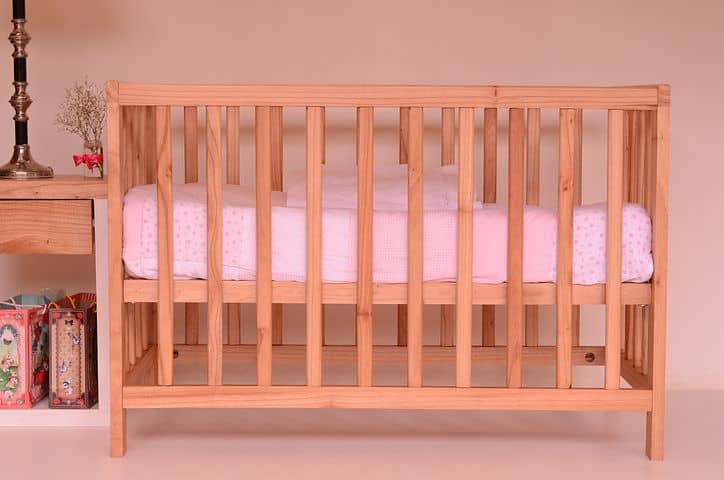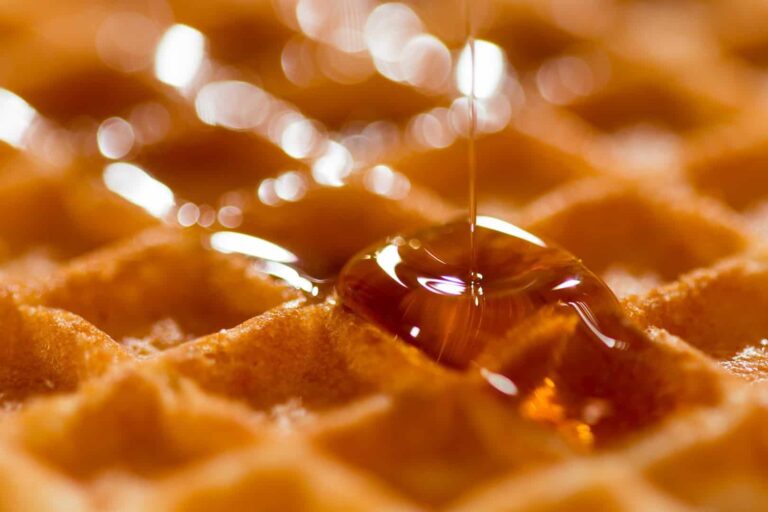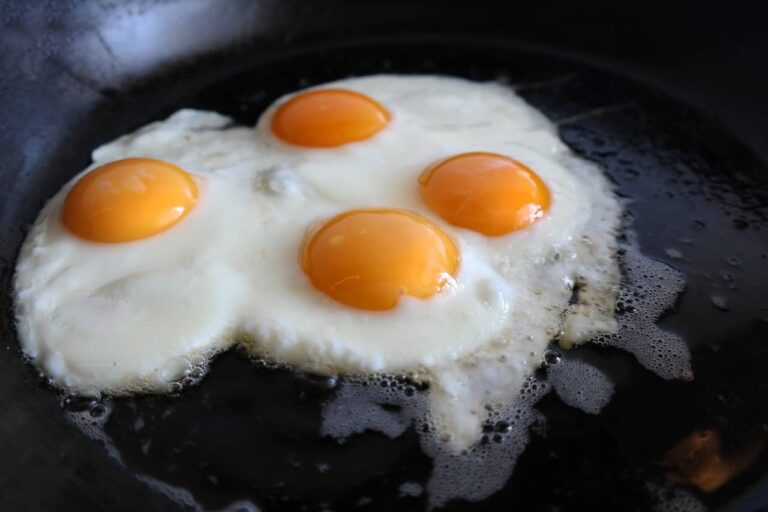Child Dental Count: How Many Teeth Does A Child Have
Have you ever wondered how many teeth a child has? It’s a question that may seem simple, but the answer is more fascinating than you might think. As a parent or caregiver, understanding your child’s dental development is crucial for their oral health and overall well-being. So, let’s dive into the world of little smiles and explore the intricacies of child tooth development.
Skip To The Following Sections
- Baby Teeth: The Early Years
- Baby Teeth vs. Adult Teeth
- Tooth Loss and Permanent Teeth
- Dental Milestones in Kids
- Functions of Different Teeth
- Baby Teeth Care and Teething
- Dental Concerns in Children
- Timing of Tooth Eruption
- Pediatric Dentistry for Tooth Development
- FAQ
- How many teeth does a child have?
- What is the order in which baby teeth erupt?
- How many permanent teeth do adults have?
- At what age do children start losing their baby teeth?
- When do permanent teeth replace baby teeth?
- What are dental milestones in kids?
- What are the functions of different types of teeth?
- How should I care for my baby’s teeth during teething?
- What dental concerns can children experience?
- What is the timing of tooth eruption in children?
- Why is pediatric dentistry important for tooth development?
Key Takeaways:
- Children typically have 20 primary or deciduous teeth, which are also known as baby teeth.
- Adults have 32 permanent teeth, including wisdom teeth.
- The eruption sequence of a child’s teeth can vary, but generally, the central incisors come in first, followed by the lateral incisors, canines, and molars.
- Tooth loss in children is a natural process, with baby teeth usually falling out between the ages of six and 13.
- Dental milestones in kids include the eruption of baby teeth, the loss of baby teeth, and the eruption of permanent teeth.
Baby Teeth: The Early Years
Babies are usually born with their primary teeth already formed beneath their gums, although rare conditions may cause some teeth to be missing. The eruption of these primary teeth, also known as deciduous teeth or baby teeth, typically begins around six months of age and is usually complete by the age of three. The order in which the baby teeth appear can vary, but there is a general sequence that is commonly observed.
The eruption of baby teeth is an exciting milestone in a child’s development. It marks the beginning of their journey towards a healthy smile and sets the stage for the eventual eruption of permanent teeth. Understanding the timeline and order of tooth eruption can help parents and caregivers anticipate and manage the teething process effectively.
Baby Teeth Timeline
While there may be slight variations, the following is a typical timeline for the eruption of baby teeth:
- Central Incisors: The two front teeth in the lower jaw are usually the first to appear, often around six to ten months of age.
- Lateral Incisors: The next teeth to erupt are the ones next to the central incisors. They usually come in around eight to twelve months of age.
- First Molars: The first molars, which are larger teeth located at the back of the mouth, tend to erupt between twelve to sixteen months of age.
- Canines: These pointy teeth usually come in between sixteen to twenty months of age, and they are important for biting and tearing food.
- Second Molars: The last set of baby molars, situated at the back of the mouth, typically erupt between twenty to thirty months of age.
While this sequence is common, it’s important to note that not all children follow the exact same timeline. Some children may experience variations in the eruption order or timing, and it’s usually not a cause for concern unless there are significant delays or abnormalities.
During the teething process, children may experience discomfort and exhibit symptoms such as swollen gums, increased drooling, and irritability. To alleviate these symptoms, parents and caregivers can provide gentle gum massage, give the child something safe and cool to chew on, and consult with a pediatric dentist for further guidance.
| Age Range | Teeth Eruption |
|---|---|
| 6-10 months | Central Incisors |
| 8-12 months | Lateral Incisors |
| 12-16 months | First Molars |
| 16-20 months | Canines |
| 20-30 months | Second Molars |
Baby Teeth vs. Adult Teeth
When it comes to teeth, kids and adults have some notable differences. Let’s explore the distinctions between baby teeth and adult teeth.
After a child’s baby teeth fall out, the process of tooth replacement begins. Humans typically develop a total of 32 permanent teeth, which take the place of the 20 baby teeth. This transition from primary to permanent teeth is a natural part of dental development. It’s fascinating to witness the transformation as your child grows.
The first set of permanent teeth to grow in are known as “succedaneous teeth,” which include the incisors, canines, and premolars. These teeth replace their baby counterparts and serve a crucial role in biting, chewing, and smiling. The eruption of these teeth can take several months, and it may require some patience on your child’s part.
“The countdown begins as your little one’s baby teeth fall out, making way for their permanent teeth to take their place.”
Next in the tooth replacement timeline are the molars. The first permanent molars, commonly referred to as the six-year molars, typically come in around age 6. These molars don’t replace any baby teeth; instead, they fill a gap at the back of the mouth. Then, around age 12, the second set of molars, known as the 12-year molars, emerge. These molars replace the baby second molars. Finally, we have the wisdom teeth, which often make their appearance in the late teens to early twenties.
It’s important to note that not everyone develops wisdom teeth, and their eruption can vary from person to person. Wisdom teeth, also known as third molars, can sometimes present challenges and may require extraction if they cause issues such as overcrowding or impaction.
In summary, the transition from baby teeth to adult teeth involves the replacement of 20 primary teeth with 32 permanent teeth. The eruption process starts with the succedaneous teeth, followed by the molars, including the six-year molars, 12-year molars, and potentially the wisdom teeth. This progression is a natural part of dental development and ensures a strong and healthy smile for your child’s future.
Tooth Loss and Permanent Teeth
When it comes to dental development, one significant milestone is the loss of baby teeth and the eruption of permanent teeth. Children typically start losing their baby teeth around the age of six or seven. By the time they reach age 12 or 13, they should have lost all 20 of their baby teeth. It’s important to note that the timing of this process can vary for each child.
Did you know? Losing baby teeth and gaining permanent teeth is a natural part of tooth development in children. It signifies the transition from the baby stage to the early stages of adulthood.
After the baby teeth have fallen out, the permanent teeth will start to take their place. Unlike baby teeth, permanent teeth are designed to last a lifetime. They are stronger, larger, and more developed than their temporary counterparts.
The eruption of permanent teeth can be different for every child. While there is a general sequence in which the permanent teeth come in, the timing may vary. The first permanent molars, often referred to as the six-year molars, are the initial adult teeth to emerge. They typically arrive behind the last baby molars.
The 12-year molars, also known as the second set of permanent molars, come in around the age of 12 or 13. Finally, the wisdom teeth, or third molars, usually make their appearance in the late teens or early twenties. However, not all individuals have wisdom teeth, and their eruption can vary or even be absent altogether.
To give you a clearer visual representation of the eruption sequence of permanent teeth, take a look at the table below:
| Age | Permanent Teeth Erupting |
|---|---|
| 6-7 years | First permanent molars (six-year molars) |
| 12-13 years | Second permanent molars (12-year molars) |
| Late teens to early twenties | Wisdom teeth (third molars) |
This image illustrates the process of tooth loss and the eruption of permanent teeth, offering a visual representation of the topic.
Dental Milestones in Kids
Dental milestones play a crucial role in a child’s dental development. From the eruption of baby teeth to the loss of these primary teeth and the subsequent eruption of permanent teeth, each stage is significant in ensuring healthy oral development. Regular dental appointments for children are essential to track these milestones and address any dental issues early on.
The first dental milestone in a child’s life is the eruption of baby teeth, also known as deciduous teeth. This typically begins around six months of age. The order in which baby teeth erupt may vary, but the general tooth eruption timeline is as follows:
| Tooth Type | Eruption Age |
|---|---|
| Central Incisors | Around 6-10 months |
| Lateral Incisors | Around 9-16 months |
| Canines (Cuspids) | Around 16-23 months |
| Molars | Around 10-33 months |
It is important to note that the eruption sequence may vary among children, but these age ranges provide a general guideline.
The next dental milestone is the loss of baby teeth, also known as primary teeth. This typically occurs between the ages of six and twelve, with the permanent teeth gradually replacing the baby teeth. By the age of 12 or 13, a child should have lost all 20 of their baby teeth.
Finally, the eruption of permanent teeth marks another crucial dental milestone. The tooth eruption sequence for permanent teeth is as follows:
| Tooth Type | Eruption Age |
|---|---|
| First Molars | Around 6-7 years |
| Central Incisors | Around 6-8 years |
| Lateral Incisors | Around 7-9 years |
| Canines (Cuspids) | Around 9-12 years |
| Second Molars | Around 11-13 years |
| Third Molars (Wisdom Teeth) | Around 17-25 years |
Again, the exact timing of tooth eruption may vary for each child.
Ensuring children have regular dental appointments is crucial in monitoring their dental milestones, identifying any issues, and maintaining oral health. Pediatric dentists specialize in the dental care of children and can provide valuable guidance throughout a child’s dental development. With their expertise, parents can support their children in achieving optimal dental health from an early age.
Functions of Different Teeth
Different types of teeth serve specific functions in the process of eating and chewing. Let’s explore the functions of the four main types of teeth:
Incisors:
Incisors are the front teeth in both the upper and lower jaws. They have a thin, sharp edge that is ideal for cutting food into smaller pieces. Incisors play a crucial role in the initial stage of digestion by aiding in the biting and cutting of food.
Canines:
Canines, also known as cuspids, are the sharp, pointy teeth located on either side of the incisors. These teeth are designed for tearing food apart. Their long and pointed shape enables them to grip and tear into tougher or more fibrous foods, facilitating the breakdown process.
Premolars:
Premolars, also called bicuspids, are located behind the canines and are larger and wider than the incisors and canines. These teeth have a flatter and broader surface, enabling them to grind food effectively. Premolars play a crucial role in preparing food for swallowing by breaking it down into smaller particles.
Molars:
Molars are situated at the back of the mouth, behind the premolars. They are the largest and strongest teeth. Molars have several cusps or rounded bumps on the surface, which are designed to facilitate chewing and grinding of food. They are responsible for the final breakdown of food particles, ensuring thorough digestion.
Here is a summary of the functions of different teeth:
| Tooth Type | Function |
|---|---|
| Incisors | Cutting food into smaller pieces |
| Canines | Tearing food apart |
| Premolars | Grinding food effectively |
| Molars | Tearing and grinding food for thorough digestion |
Understanding the functions of different teeth highlights the importance of maintaining good dental hygiene and caring for the overall health of our teeth and gums.
Baby Teeth Care and Teething
Teething can be a challenging time for both babies and parents. When baby teeth begin to erupt, it can cause discomfort and irritability for the little ones. In this section, I will discuss common teething symptoms, teething remedies, and the importance of baby teeth care.
Teething Symptoms
- Sore and red gums: During teething, it is common for the gums to become inflamed and tender.
- Increased drooling: Excessive drooling is often observed during teething as babies’ salivary glands become more active.
- Irritability: Teething can make babies feel uncomfortable, leading to increased fussiness and irritability.
If you notice these signs in your baby, it is likely that they are experiencing the teething process.
Teething Remedies
Fortunately, there are various teething remedies available to provide comfort to your little one:
- Teething toys: These toys are specifically designed to soothe sore gums and provide relief from teething discomfort.
- Chilled washcloths: Wetting a clean washcloth and chilling it in the refrigerator can provide a cooling effect when gnawed on by the baby.
- Teething gels: Teething gels containing a mild numbing agent can temporarily alleviate teething pain. It’s important to check with your pediatrician before using any teething gels.
It is essential to note that teething gels should only be used under the guidance of a healthcare professional, as some may contain ingredients that can be harmful to infants.
Brushing Baby Teeth
As soon as your baby’s first tooth erupts, it’s time to start brushing! Proper baby teeth care is crucial for maintaining good oral health. Here are some tips for brushing baby teeth:
- Gently clean your baby’s teeth using a soft-bristled toothbrush and a smear of fluoride toothpaste.
- Brush in circular motions, paying attention to all surfaces of the teeth and along the gumline.
- Brush twice a day, in the morning and before bedtime.
Developing a regular brushing routine from an early age helps establish good oral hygiene habits and promotes healthy teeth and gums.
Remember, teething is a natural process, and with proper care and soothing remedies, you can help your baby navigate through this milestone with less discomfort.
Dental Concerns in Children
When it comes to dental health, children may experience various concerns that require attention and intervention. It is important to address these issues promptly to prevent future complications and ensure a healthy smile. Some common dental concerns in children include:
- Crooked baby teeth: Insufficient space in the mouth can lead to crooked or misaligned baby teeth. This condition may affect the proper eruption and alignment of permanent teeth.
- Tooth crowding: Similar to crooked baby teeth, tooth crowding occurs when there is not enough space for the permanent teeth to grow. This can result in overlapping or misaligned adult teeth.
- Delayed tooth eruption: Some children may experience delayed tooth eruption, where the permanent teeth take longer than usual to emerge. This can be a sign of underlying dental issues.
- Dental abnormalities: Certain dental abnormalities, such as extra teeth or missing teeth, may affect the overall dental development and alignment.
- Thumb sucking: Prolonged thumb sucking can cause dental problems, including misalignment of the teeth and changes in the shape of the jaw.
- Braces for children: In cases of severe misalignment or tooth crowding, braces may be required to correct the position of the teeth and create a proper bite.
Addressing these dental concerns often requires the expertise of a pediatric dentist or orthodontist. They can evaluate the child’s dental condition, recommend appropriate treatments, and provide guidance on preventive measures. Early intervention and regular dental check-ups play a crucial role in ensuring optimal dental health for children.
“Treating dental concerns in children not only improves their oral health but also enhances their overall well-being. Early intervention and comprehensive dental care can tackle problems like crooked baby teeth, tooth crowding, and delayed tooth eruption, setting the foundation for a lifetime of healthy smiles.” – Dr. Samantha Davis, Pediatric Dentist
Timing of Tooth Eruption
When it comes to the eruption of teeth, the timing can vary for each child. However, there are general age ranges for the eruption of specific teeth. Let’s take a look at some key milestones of tooth eruption:
- Six-Year Molars: The first permanent molars, also known as “six-year molars,” typically erupt between the ages of five and seven. They are the first set of permanent teeth to appear and play a crucial role in chewing and maintaining proper dental alignment.
- 12-Year Molars: Around the age of 11 or 12, the second set of permanent molars, known as “12-year molars,” start erupting. These molars are located at the back of the mouth and provide additional chewing surfaces.
- Wisdom Teeth: Wisdom teeth, also called third molars, usually erupt between the late teens and early twenties. However, the timing of wisdom teeth eruption can vary widely and may even continue into the mid-twenties. These teeth are often associated with potential dental issues such as overcrowding or impaction and may require extraction.
- Late Tooth Eruption: While most children follow a typical tooth eruption timeline, some may experience late tooth eruption. Late tooth eruption can be a result of various factors, including genetics, dental abnormalities, or delayed development. If you notice significant delays in tooth eruption, it is best to consult with a dentist for further evaluation and appropriate care.
Understanding the timing of tooth eruption is essential for parents and caregivers to ensure proper dental hygiene and identify any potential dental concerns. Regular dental check-ups and open communication with a pediatric dentist can help monitor tooth development and address any issues promptly.
Remember:
Every child’s tooth eruption journey is unique, and deviations from the average timeline are generally not a cause for alarm. However, staying proactive and seeking professional advice when necessary will help maintain optimal oral health for your child.
| Tooth | Age of Eruption |
|---|---|
| Six-Year Molars | Around age 6 |
| 12-Year Molars | Around age 12 |
| Wisdom Teeth | Late teens to early twenties |
Pediatric Dentistry for Tooth Development
In order to ensure proper dental development and maintain optimal oral health in children, it is crucial to seek the expertise of pediatric dentists. These dental professionals specialize in providing comprehensive and specialized care for kids, ensuring that their tooth development progresses smoothly.
Pediatric dentists are knowledgeable about the unique dental needs of children and can offer guidance on a range of important topics, including tooth development, early intervention for dental issues, and preventive treatments. By addressing potential problems early on, pediatric dentists can help prevent more serious dental complications in the future.
Regular dental check-ups for children play a vital role in maintaining their oral health. By scheduling routine dental check-ups, parents can ensure that any tooth development issues or oral health concerns are identified and addressed promptly. These check-ups also provide an opportunity for pediatric dentists to evaluate the effectiveness of oral hygiene practices and educate parents on proper dental care for kids.
When it comes to dental care for kids, pediatric dentistry offers specialized services tailored to meet the unique needs of children. By partnering with a trusted pediatric dentist, parents can proactively support their child’s dental development and promote long-term oral health.
FAQ
How many teeth does a child have?
Children typically have 20 baby teeth, also known as primary or deciduous teeth.
What is the order in which baby teeth erupt?
The order of baby tooth eruption varies, but generally, the central incisors come in first, followed by the lateral incisors, canines, and molars.
How many permanent teeth do adults have?
Adults have 32 permanent teeth, which include succedaneous teeth and wisdom teeth.
At what age do children start losing their baby teeth?
Children typically start losing their baby teeth around age six or seven.
When do permanent teeth replace baby teeth?
By age 12 or 13, children should have lost all 20 baby teeth, and the permanent teeth will take their place.
What are dental milestones in kids?
Dental milestones in kids include the eruption of baby teeth, the loss of baby teeth, and the eruption of permanent teeth.
What are the functions of different types of teeth?
Incisors are used for cutting food, canines tear food, premolars grind food, and molars are designed for tearing and grinding.
How should I care for my baby’s teeth during teething?
You can use teething toys, chilled washcloths, and teething gels to help soothe your baby’s teething discomfort. It is also important to start brushing their teeth as soon as they erupt.
What dental concerns can children experience?
Some children may experience crooked baby teeth due to insufficient space in the mouth. Thumb sucking can also contribute to dental issues. In some cases, braces may be needed to correct misalignment or crowding of teeth.
What is the timing of tooth eruption in children?
The timing of tooth eruption can vary for each child, but in general, the six-year molars and 12-year molars come in around those respective ages. Wisdom teeth usually erupt in the late teens to early twenties.
Why is pediatric dentistry important for tooth development?
Pediatric dentists specialize in the dental care of children and can provide guidance on tooth development, early intervention for dental issues, and preventive treatments. Regular dental check-ups are essential to ensure proper dental development and maintain oral health in children.










